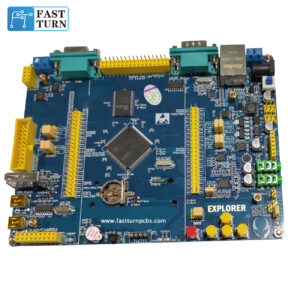The importance and specific methods of PCB appearance and internal quality inspection, including board surface, identification, size, welding quality inspection, as well as board quality, conductivity, insulation performance, thermal performance, and environmental adaptability testing.
PCB appearance inspection
1. Board inspection
Observe whether the surface of the PCB is flat, without any bumps, scratches, or stains.
Check if the solder pads and wires are intact, and if there are any defects or short circuits.
Confirm whether the color of the PCB is uniform and whether there are obvious color differences or spots.
2. Identification inspection
Verify if the identification information on the PCB, such as the manufacturer’s logo, production date, batch number, etc., is clear and visible.
Check if there are necessary certification marks, such as UL, CE, etc.
3. Dimensional measurement
Use calipers or measuring instruments to accurately measure the length, width, and thickness of the PCB to ensure compliance with design requirements.
Check if the aperture size and position of the PCB are accurate.
4. Welding quality inspection
Visually inspect the solder joints for smoothness, fullness, and absence of virtual or cold welding.
Use X-ray or infrared detection equipment to check for any voids or cracks inside the welding.
Internal quality inspection of PCB
1. Plate quality
By using chemical analysis methods, check whether the material and composition of PCB boards meet the standards.
Check the internal structure of the board, such as whether the fiber arrangement is neat and whether there are any layering or bubbles.
2. Conductivity testing
Use four probe testers and other equipment to measure the conductivity of the PCB and ensure that it meets the requirements of the circuit design.
Check if the conductive path is clear and there are no open or short circuits.
3. Insulation performance testing
By using high-voltage testing equipment, check whether the insulation layer of the PCB can withstand the specified voltage without breakdown.
Check if the insulation material is evenly coated between the conductive layers, without any omissions or uneven thickness.
4. Thermal performance testing
Conduct thermal shock and thermal cycling tests on PCBs to evaluate their stability and reliability under extreme temperature conditions.
Check if the PCB undergoes deformation, cracking, or delamination at high temperatures.
5. Environmental adaptability testing
Conduct salt spray testing, mold testing, etc. on PCBs to evaluate their durability in harsh environments.
Simulate the performance of PCB under mechanical stress such as vibration and impact, and check its structural strength and stability.
















